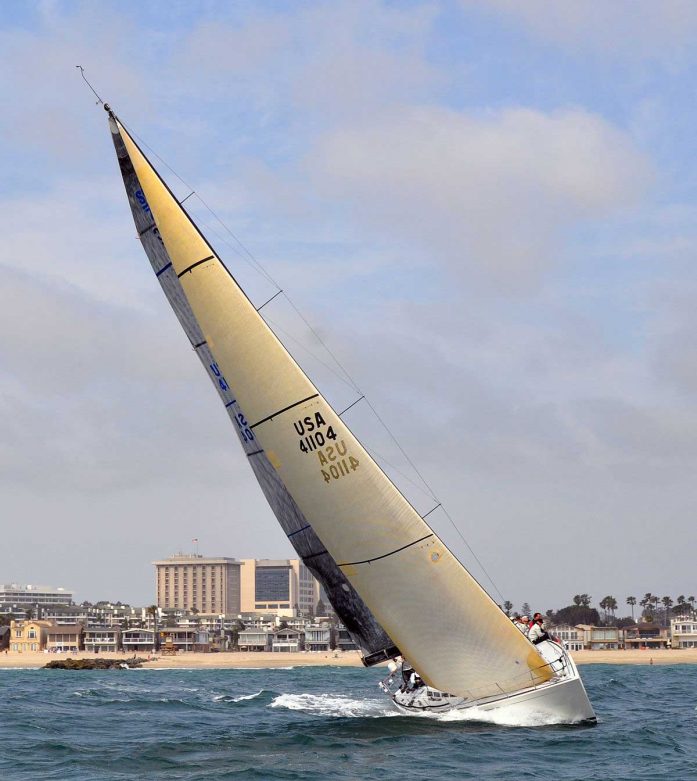The sloop is a sailing boat with a single mast and a fore-and-aft rig. It has only one head-sail: if a boat has two or more head-sails, it is named cutter, not sloop, and its mast may be set further aft than on a sloop. In Dutch they call it “sloep”, and in French it’s called “chaloupe”. The most common rig of modern sailboats is the Bermuda-rigged sloop. Typically, a modern sloop carries a mainsail on a boom aft of the mast, with a single loose-footed head-sail (a jib or a genoa jib) forward of the mast.

A sloop in Newport – photo by Don Ramey Logan
[source: wikipedia.org]
The Difference Between the Sloop and the Cutter
I have to start first with the “rig” term. As a noun, besides being a machinery designed for a special purpose, a rig is also the distinctive shape, number and arrangement of sails and masts of a ship. The sloop is considered the simplest and most popular rig today. The mast has to be placed one third forward and two thirds aft on a boat. If it is placed closer to the middle of the boat, this particular rig defines a cutter, which is very easy to be confounded. As already mentioned, the cutter has more than one head-sail.
The modern yachting sloop is known as the Bermuda sloop, due to its Bermuda rig, which is the optimal rig for upwind sailing; consequently sloops are popular with sport sailors and yachtsmen, and for racing. The rig is simple in its basic form, yet when tuned properly, it is maneuverable and fast. The main disadvantage is the relatively large size of the sails, especially on larger vessels. It is also less successful sailing downwind.
The Bermuda sloop is a type of fore-and-aft rigged sailing vessel developed on the island of Bermuda in the 17th century. In this sense, the term is applied to small ships, rather than boats. In its purest form, it is single-masted, although ships with such rigging were built with as many as three masts. Its original form had gaff rig, but evolved to use what is now known as Bermuda rig, making it the basis of nearly all modern sailing yachts.
This article was more than inspired from Wikipedia, but it’s less confusing.
If you like what you read, please subscribe to this blog by completing the form. If you want to help more, start by following us on Twitter, and like our page on Facebook. You don’t know what good things may happen. To lighten your day, check our pins on Pinterest, we can be friends there too. Oh, and if you need a really good looking blog attached to your site, or just for fun, to express your feelings more competitively, read this Own Your Website offer! Thank you very much.
